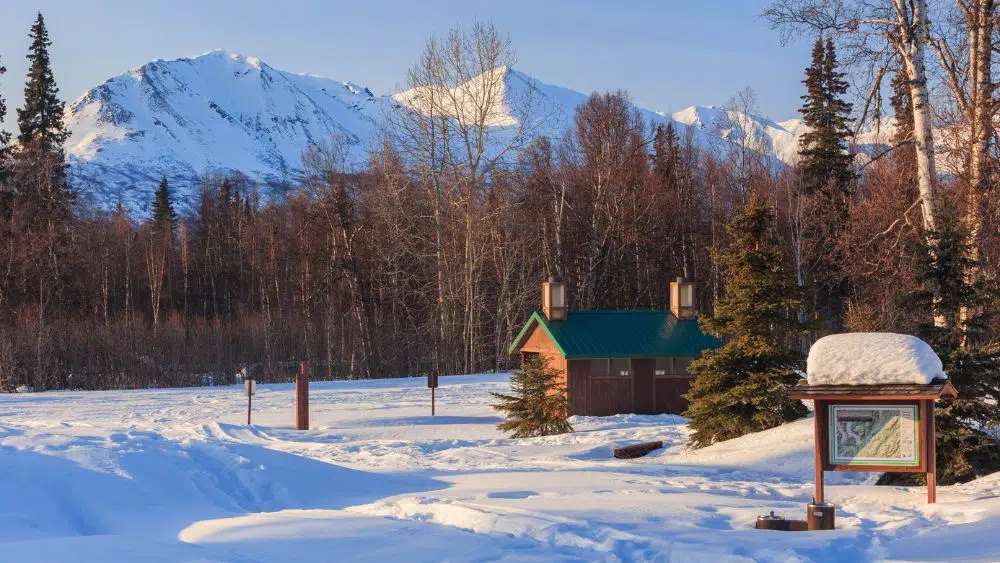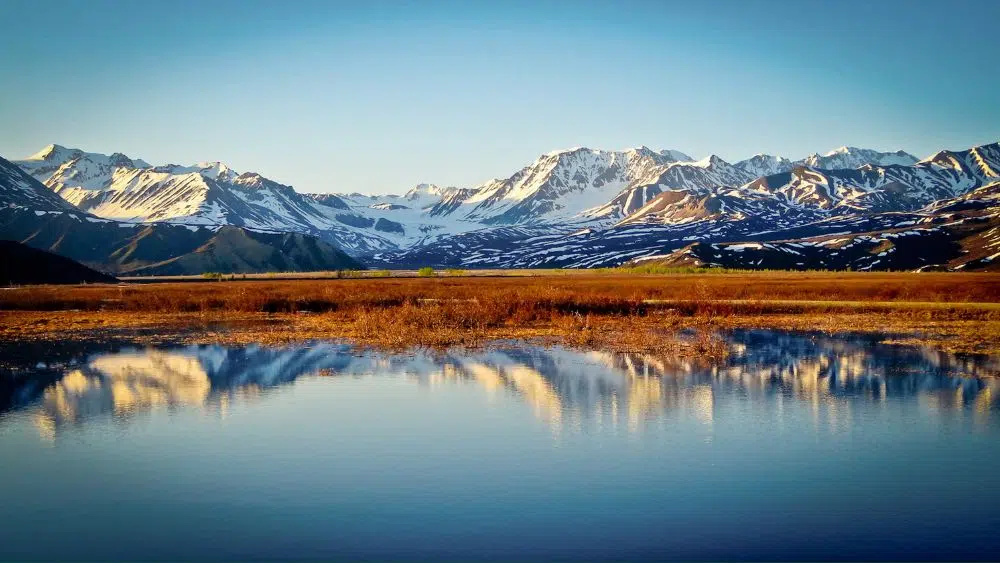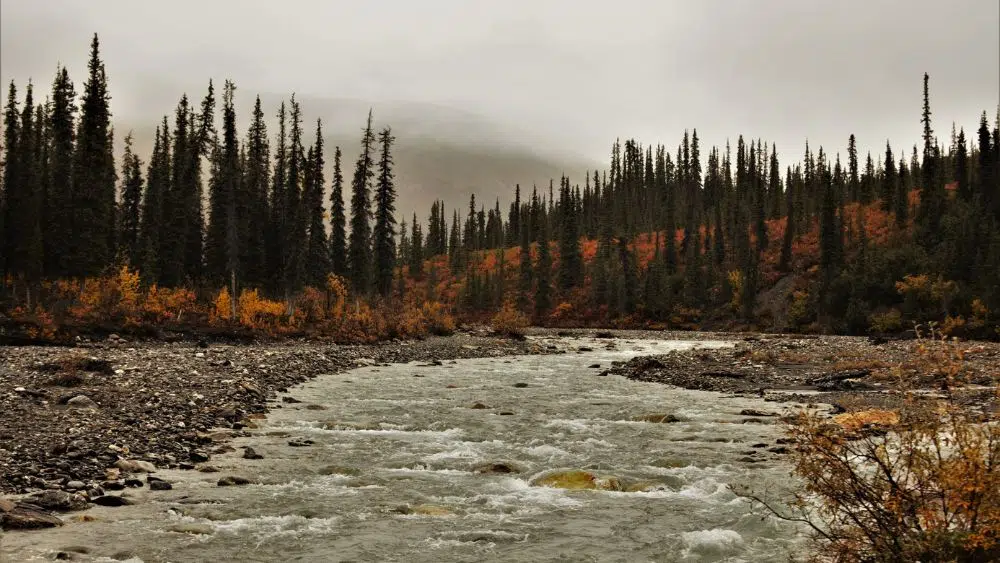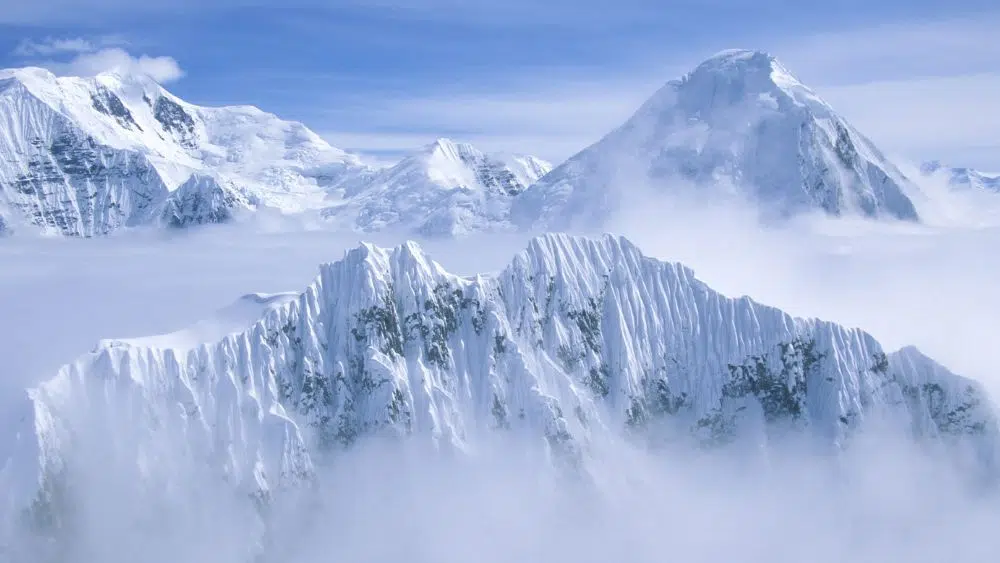The rugged frontier of Alaska is known for its abundant untouched lands and gorgeous natural views. From cascading mountains to breathtaking waterways, the vastness of the largest state in the United States offers some of the most awe-inspiring sights for any backpacker, sightseer, or adventure-seeker. Alaska is one of the few remaining places with spaces of untouched wilderness, thanks to the National Park Service managing approximately 60 percent of the land.
Many prospective homebuyers across the country are wary of settling down and buying a home for fear that they will have to abandon their adventurous spirit. Life in Alaska affords individuals the opportunity to have the best of both. Building a dream home in Alaska gives new homebuyers access by car, boat, plane, and hiking boots to some of the best state parks in the country.
If you’re considering a move to be closer to the quiet refuge of the woods, incredible hiking views, and harmonious wildlife ecosystems, The Last Frontier may be the perfect place to call home.
Here are the top 10 state parks in Alaska.
Chugach State Park

Google Rating: 4.8
Only 13 miles from Anchorage, Alaska’s largest city in terms of population, Chugach State Park is the fourth largest state park in the U.S. and is filled with diverse wildlife species. The park encompasses the western end of the Chugach Range that stretches from Anchorage to Canada. At close to half a million acres in size, Chugach State Park is large enough to hold both New York City and Los Angeles within its borders.
Whether you are hiking, camping, whitewater rafting, observing wildlife, or picking berries, Chugach State Park offers opportunities for it all. In the winter months, trails are open for cross-country skiing or snowshoeing. Glacier viewing and gold panning are some of the more unique attractions for this Alaskan park. Many visitors flock to Chugach State Park every year for northern lights viewing as well.
Denali State Park

Google Rating: 4.8
Not to be confused with Denali National Park and Preserve, Denali State Park is situated along the southern border of the national park. Located about 132 miles from Anchorage and nestled between the Talkeetna Mountains to the east and Alaska Range to the west, the Denali State Park is a popular spot for camping, hiking, fishing, and boating. At 324,240 acres (almost half the size of Rhode Island!), it is only the fourth largest state park in Alaska.
A unique feature of this park is its smooth transition from coastal terrain to the rugged spine of the Alaska Range. Bubbling streams are framed by heavy forest overhangs while water birds enjoy the cool waters. In the wintertime, the views of the neighboring mountains capped with snow are unmatched. Snowmobiling is permitted if the snow is high enough so as not to harm the vegetation below.
Independence Mine State Historical Park

Google Rating: 4.8
Take a step back in time and explore Alaska’s fascinating gold rush history. Located 317 miles from Fairbanks, this huge abandoned gold mine is set in the Talkeetna Mountains at the top of Hatcher Pass, which provides a gorgeous alpine passage to explore. This 761-acre park tells a story of the region’s history. Visitors are permitted to walk the park on foot or participate in a 45-minute guided tour in the summer months. While there are no places to camp at the Independence Mine State Historical Park, this park makes for the perfect Alaska day trip of fun for the whole family.
Totem Bight State Historical Park

Google Rating: 4.6
Situated in dense temperate rainforest, the Totem Bight State Park was made to preserve Alaska Native culture while also educating the public on its history. Native villages and totem poles were mostly left behind in the early 1900s when many indigenous people left their homes to seek work elsewhere. In 1938, the U.S. Forest Service launched a program to salvage the large cedar totem poles and hired Tlingit and Haida carvers to restore them. Now, visitors can take a sneak peek into a model Alaska Native village and learn more about the intricate carvings on the preserved totem poles.
Chena River State Recreation Area

Google Rating: 4.6
Perhaps one of the most easily accessible state parks in Alaska, Chena River State Recreation Area is just a short half-hour drive from Fairbanks. This 254,080-acre preserve offers a myriad of outdoor activities, including hiking, fishing, canoeing, rock climbing, and wildlife viewing. Popular winter activities include ice fishing, cross-country skiing, snowmobiling, dog mushing, and northern lights viewing. The clear-running Chena River is known for its catch-and-release Arctic grayling fishery and various lengths of trails with shelters to accommodate any length of the trip.
Matanuska Glacier State Recreation Site

Google Rating: 4.7
The Matanuska Glacier State Recreation Site may be one of the smaller state parks, but it offers some of the most stunning views of the Matanuska Glacier, the Chugach Mountains, and the Talkeetna Mountains. Located 93 miles from Anchorage, the 229-acre park is managed by Long Rifle Lodge and offers hiking, camping, and viewing areas. The glacier is not accessible from the state park, but visitors may take advantage of guided tours on-site and hike about a mile north to access the glacier from Glacier Park. The site is open in the summer and closed during the icy winter months.
Finger Lake State Recreation Area
Google Rating: 4.4
Located 40 miles from Anchorage, in a quiet sanctuary between the cities of Palmer and Wasilla, the Finger Lake State Recreation Site offers camping, fishing, and a peaceful retreat from the hustle of the city. Most popular amongst boaters and fishermen, the park’s lake access offers excellent opportunities for sport fishing and ice fishing. Picnic areas, campgrounds, and gorgeous waters for canoeing and paddleboarding make for a fun family vacation or day trip.
Summit Lake State Recreation Site

Google Rating: 4.4
Only 70 miles from Anchorage and not far from Independence Mine State Historic Park, Summit Lake State Recreation Site is a 360-acre park named for the glacially carved lake that lies within its borders. At 3,886 feet of elevation, the site is popular among hikers, paragliders, and backcountry skiers. Road access is typically open from July to late September for visitors to hike along the trails encircling a stunning crystal-clear lake. Breathtaking panoramic views of the Willow Creek Valley, the Susitna Valley, and the western arc of the Alaska Range draw in sightseers and photographers every year to capture the incredible vistas. Berry picking is also a popular family activity every year amongst park visitors.
Deep Creek State Recreation Area
Google Rating: 4.7
Approximately 188 miles from Anchorage, Deep Creek State Recreation Area offers gorgeous views of Mount Iliamna and Mount Redoubt but is particularly attractive to anglers due to its legendary salmon runs. A tractor-assisted boat launch offers easy access to Cook Inlet for private boats and fishing charters on the hunt for halibut and king salmon. An incredibly diverse scene of wildlife and nature views from scenic overlooks offer a respite from everyday life stressors. The beachside campground is perfect for a weekend getaway or family day trip.
Settlers Cove State Recreation Site
Google Rating: 4.8
Located in Ketchikan, Settlers Cove State Recreation Site is a smaller site with plenty of attractions for the whole family. Offering two incredible sandy beaches, the park is frequented by locals and travelers seeking to sunbathe, picnic, paddleboat, and soak in the gorgeous views of Prince of Wales Island. Campsites and a public-use cabin are available for rent on the campgrounds and picnic areas are a delightful spot to enjoy a weekend trip with friends and family.
National Parks, Too
Aside from the top 10 state parks listed above, Alaska has eight national parks, including the largest national park in the country. So be sure to take these breathtaking natural wonders into consideration if you’re planning a move north.
Denali National Park and Preserve

The best time to visit Denali National Park and Preserve is from late May to mid-September. Backpackers fly and bus in from all over the world to view Mount Denali, the highest mountain in North America. Visitors can head out into the park on a camper bus for a few days at a time to explore the incredible nature scenes and spot diverse wildlife.
Plan to spend several days if you want to have the full backpacking experience, as every visitor must undergo the permit process and learn about how to camp safely in bear country. The longer you stay, the more likely you are to view more incredible scenes.
Gates of the Arctic National Park

Known for its incredible size and ancient solitude, the Gates of the Arctic National Park is just about as rugged and natural of a landscape as it gets. There are no roads or trails through the park, simply untouched land that is inhabited only by indigenous people and native wildlife.
Experienced campers will find a hike through these 8.4 million acres to be extremely challenging. Backpackers must rely on their survival and navigation skills while leaning into solitude to truly embrace the spectacular landscape and life in the wild. Other ways to explore the Gates of the Arctic are by air taxi to float one of the six wild rivers, or by organized tours.
Glacier Bay National Park and Preserve

One of the most popular and widely visited national parks is Glacier Bay National Park and Preserve, an expansive sanctuary protected by several national and worldwide conservation groups. Its picturesque views of snow-capped mountains and tidewater glaciers attract many visitors to explore by cruise ship in the summer.
The park’s remote location and lack of roads and trails render it only accessible by boat, foot, or plane. There are some accommodations at the edge of the park that provide lodging and information for visitors on the many activities permitted in the park, such as hiking, fishing, kayaking, and wildlife viewing.
Katmai National Park and Preserve
Located about 290 miles southwest of Anchorage, Katmai National Park and Preserve is particularly famous among outdoor enthusiasts and photographers for two reasons: brown bears and the Valley of Ten Thousand Smokes. Katmai hosts the world’s largest protected brown bear population, possibly up to 2,200. Visitors come from all over to photograph bears at Brooks Camp where they come to feed on the wild abundance of sockeye salmon. The park also offers tours of the Valley of a Thousand Smokes Volcanoes, where over 15 individual volcanoes are protected by the park. Outdoor enthusiasts also enjoy hiking, fishing, and wildlife viewing.
There is only one way to reach the park, which is by plane from Anchorage to King Salmon, then by boat to the park. There is one lodge in the park where visitors can stay overnight, rentable by lottery application. There is also a tent campground.
Kenai Fjords National Park

For nature enthusiasts, the Kenai Fjords National Park is a must-see. Located in the southern part of the state, this national park covers over 660,000 acres and is one of the least-visited U.S. National Parks, thus minimizing crowds and allowing visitors a peaceful journey to view some of the most spectacular glaciers and wildlife in the state.
Exit Glacier, the only park attraction accessible by car, is known for its breathtaking views. There are abundant hiking trails, camping, and backpacking opportunities for visitors. Most visitors come to the park for a boat trip to view the larger-than-life fjords and wildlife, including humpback whales, orcas, puffins, bears, and so much more. To visit the park, visitors should start at Seward and depart from Seward Harbor for tours and boat cruises. Another way to view the incredible natural landscape is by helicopter to get a bird’s eye view of the gorgeous scenery.
Kobuk Valley National Park
The Kobuk Valley National Park is as untamed as the rest of the National Parks in Alaska, made unique by some of the largest active dunes in the Arctic. The park cannot be accessed by car, but visitors can hike in or access it by boat, air taxi, or even snowmobile in the winter. The remote nature of the park lends itself to being best experienced through an organized tour or expedition. Visitors flock to the huge park every year to view the famous caribou migration, or simply to hike and camp in the beautiful outdoors.
Lake Clark National Park and Preserve

Lake Clark National Park and Preserve is visible from Anchorage, but only accessible by boat or air taxi. Visitors should start at Port Alsworth, where they may check out the Lake Clark Visitor Center. Major attractions of Lake Clark National Park are the massive number of brown bears, diverse wildlife, stunning views, and hiking trails.
Wrangell-St. Elias National Park and Preserve

While all the parks in Alaska are incredibly gorgeous, nothing is quite as stunning as the Wrangell-St. Elias National Park and Preserve. It is, quite literally, larger than life at 13.2 million acres and is the largest National Park in the United States. It is about 4.5 hours from Anchorage, so visitors tend to stay for several days when visiting the park. Nine of the 16 highest mountain peaks in the U.S. are in Wrangell-St. Elias. Known for its mountains, glaciers, and volcanoes, this park is massive in every way imaginable.
The Last Frontier
Interested in moving to Alaska? Learn more about the state’s incredible prospects by checking out some of our other articles, including the best places to live, the safest cities, and how to build a house in Alaska. And when you’re ready to buy your new home, you can find new listings every day at NewHomeSource.com.
All parks have been ranked based on the criteria of popularity, distance from closest major cities, violent crime, property crime, Google ratings, and the number of Google reviews.

Melanie Theriault is a writer, counselor, and lifelong learner. She holds a B.A. in Sociology from Southwestern University, where she discovered her passion for fostering human connection through storytelling.
 Top 10 State Parks in California
Top 10 State Parks in California